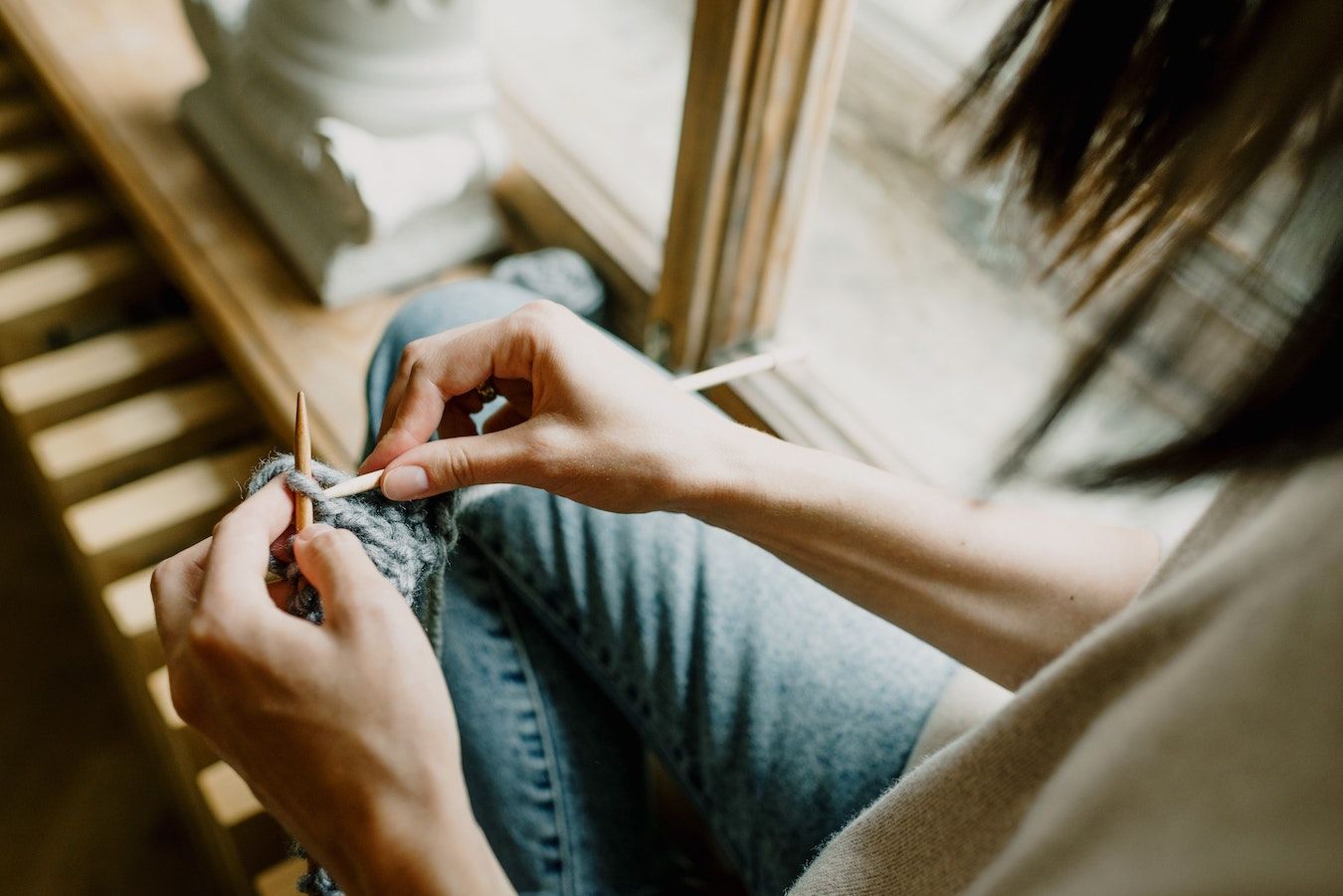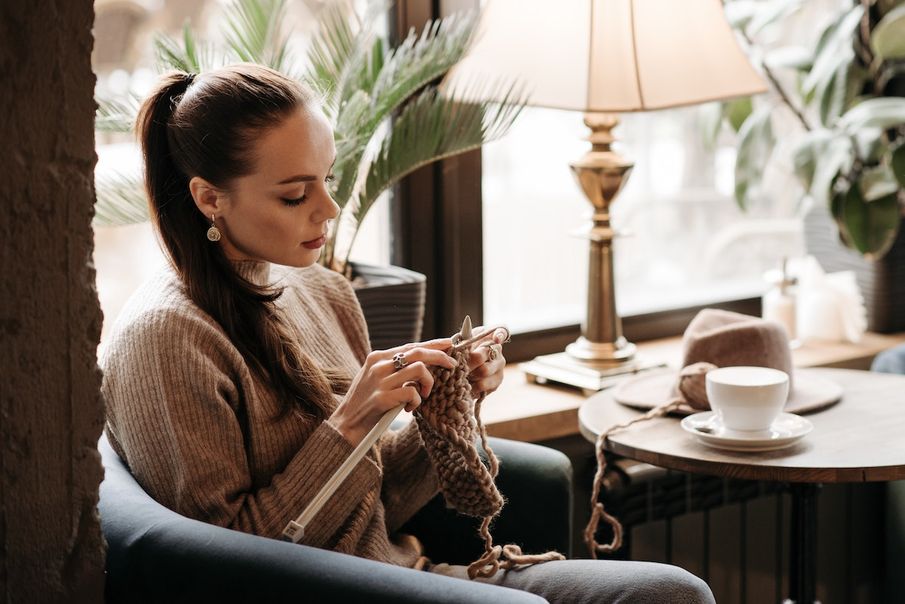Throughout history, humans have turned to craft in times of sorrow. But what is it that makes working with our hands such a force for healing?
One of my earliest memories is sitting on my gran’s knee, with two colourful plastic needles in my hands, learning to knit. I remember watching the agonisingly slow growth of a tiny square we were forming together until, suddenly, it became the size of a coaster, and I was allowed to give up. I’d been desperately impatient, but she had remained serene, calmly continuing to encourage me as though she was passing along the most important skill I could possibly acquire, which, as it turned out, she was.
Throughout history, people have turned to creativity in moments of grief. Victorian women hand-stitched brooches in their bereavement; Americans embroidered weeping willows in silk following the death of their inaugural President Washington; Missouri Pettway (1900–1981) of Gee’s Bend, made a pieced cotton quilt in mourning for her husband from his work clothes; and today nearly 50,000 panels compose the Aids Memorial Quilt, each handmade in memory of loved ones lost.
Though she had taught me to knit as a four-year-old, I would only really pick up a pair of knitting needles again after my gran had died, when I’d find myself using the leftover wool from her knitting basket to form a series of wobbly scarves. The wools were all different weights and the scarves dipped in and fattened out in a strange uneven journey towards my casting off. Yet the repetitive action of pulling each loop of wool through another seemed the only thing capable of momentarily distracting my mind from the raw edge of loss. I realised then, that she had in fact been passing along an invaluable gift, one of both survival and care, which would rescue me in the deepest periods of grief following her death, and later that of my grandad.
Craft can allow us to memorialise loved ones, but it can also provide a kind of comfort in times of grief. There is something in the act of making that can temporarily subdue life’s sorrows, helping to carry us from one moment to the next despite the weight we may be carrying.

Creativity, whether it takes the form of a homemade loaf, a poem, or a slowly growing piece of knitwear, is a healing force. Like meditation, it can decelerate the noise of daily life by inviting us to take a moment to focus on something small, something intimate.
The meditative quality of repetitive creative acts such as weaving, knitting, sewing, or dyeing lies in the fact that they require a certain level of focus. This focus keeps our minds anchored to the present task and can temporarily provide a distraction from whatever is troubling us.
Because of this, craft courses have been prescribed to patients since the very beginnings of occupational therapy, and basket-making workshops were offered to soldiers in the First World War to relieve anxiety. Creativity encourages what psychologists refer to as ‘flow’: a state in which the complete absorption in what you’re doing results in the transformation of a sense of time. While knitting, I lose track of the minutes for just long enough that I find a sense of peace on my return to them.
Each stitch, whether knitted or purled, or some more complicated variation, captures my attention. This level of focus activates parts of the brain’s cortex involved in regulating emotions and reduces activity in the region of our brain responsible for processing negative emotions and fear. Completion of a project also brings with it a dopamine boost, and because of this, making can become a remedial act through which we can practise self-care. I am not a perfectionist; I don’t count the stitches at the end of each row, and they often oscillate as the piece grows. I create meandering scarves and tank tops with wonky ribbing, but the completion of each brings a sense of quiet triumph: I made this.

The physical act of making helps me to feel useful, to occupy my hands and mind in times when I feel powerless. When I’m anxious about something fleeting, a looming deadline or a heft of unread emails, I bake. It feels good to concentrate on the simple practicality of mixing flour, sugar, butter, and eggs with whatever I have in the cupboard or fruit bowl. But, when the path to recovery is a little longer, I begin to knit. Knitting lacks the immediacy of baking, it’s suited to slower journeys of healing. There is a sense of hope that once the project is finished, I may feel capable of returning to some semblance of a daily routine.
There is no absolute cure for grief. I’ve found its presence to be tidal; sometimes allowing me to drift along the surface, and other times swallowing me whole. However, making can alleviate the weight of loss and has helped me to stay afloat in difficult times. I witnessed these same effects of creativity on my mother, as she came to terms with the loss of her father through learning to indigo dye; dipping and re-dipping lengths of pale fabric into the dark green depths of a dye vat then watching each oxidise a gentle blue to soothe the immediacy of loss.
Yesterday I pulled a moss-coloured tank top from my freezer. It had been there for two weeks, encased in ice, as a precautionary measure following a moth scare. I donated a good portion of my woollens to local charity shops, but I found myself unable to part with anything hand knitted. It seemed crucial to preserve these items, even if they weren’t the most frequently worn in my wardrobe, because each had been produced in a time of need. They symbolise something far greater than the winter warmth they physically provide; they remind me of difficult times overcome through craft and creativity.


Comments